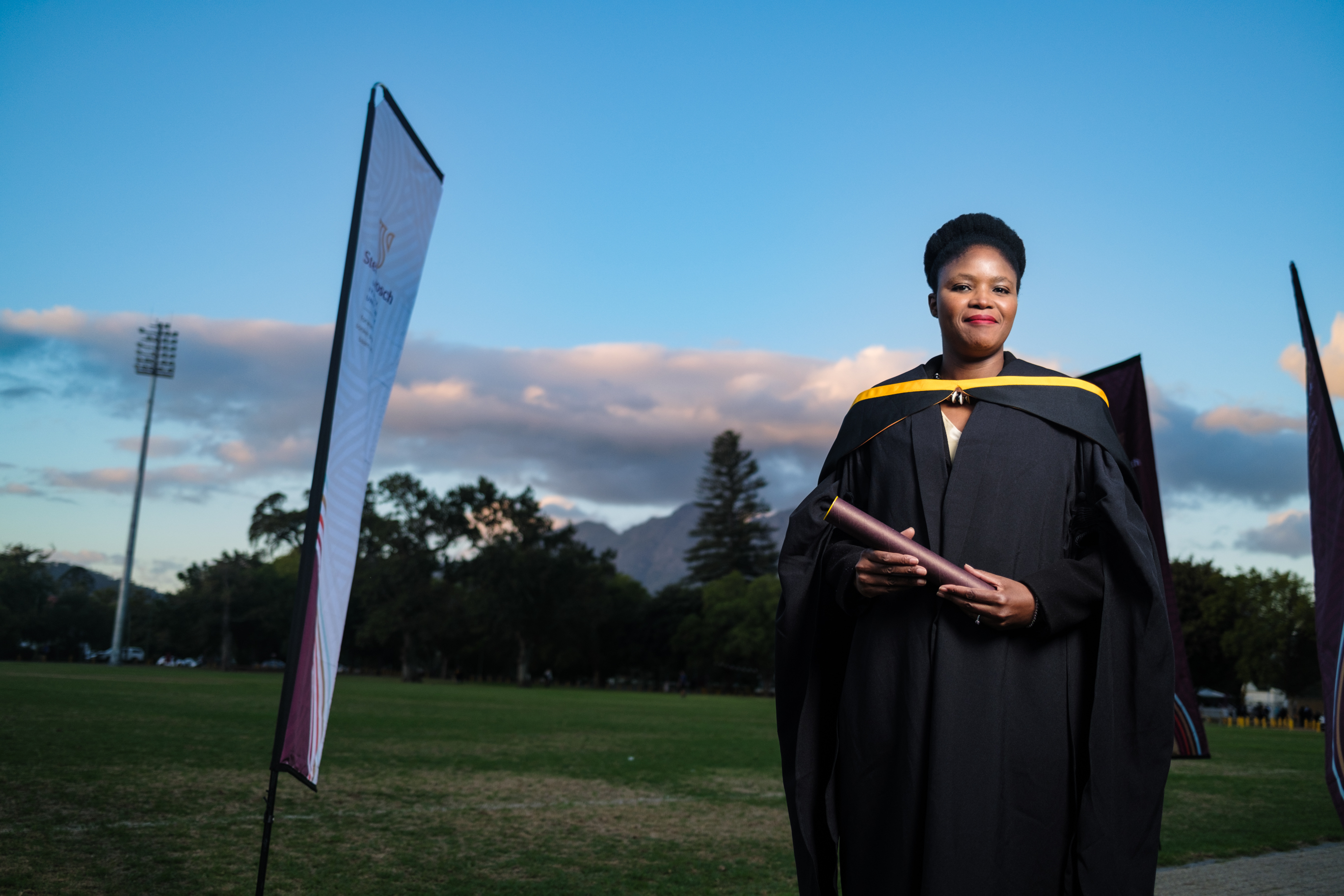With films such as the 2020s, The Sound of Metal and CODA – the latter winning Best Picture at this year's Oscars – stories about the Deaf community have recently become more prominent in popular culture and media.
This is a very good thing, says Modiegi (Susan) Njeyiyana, a Deaf lecturer at Stellenbosch University (SU) who received a Master's in Linguistics during the April graduation cycle.

“We need a lot more of that," she says. “We want Deaf people to participate in hearing society, but we also want hearing people to learn about who we are as a community. We have to build a bridge and let the two streams mix into one river."
Njeyiyana, who matriculated from the St Vincent School for the Deaf in Johannesburg in 1993 and received an honours degree in Linguistics from the University of Witwatersrand in 2017, has been a lecturer at the University since 2018. After school, she briefly dabbled in the beauty industry, but that wasn't for her. Her true calling was in education, specifically in the Deaf community, -where she worked for 16 years as a presenter, facilitator, storyteller and poet for the organisation Sign Language Education and Development (SLED).
When an opportunity at SU opened up, she jumped at the chance. The title of her Master's degree is “Lexical variation and change in SASL: a case study of a Western Cape school-lect", and researched the variations and language change in South African Sign Language (SASL) within one specific school in the Western Cape, The Dominican School for the Deaf in Wynberg.
The differences in dialect within SASL are something that has always interested her. According to Njeyiyana, SASL developed in silos during apartheid because cultures weren't allowed to mix, so Deaf Zulu children's sign language was based on their culture and had different signs for the same word from, say, Tswana children. After 1994 everyone was allowed to mix, and this influenced SASL significantly.
That's one of the reasons that SASL is so different from, for example, British Sign Language. All the different South African cultures and languages have influenced SASL to create a truly unique language.
In her Master's dissertation, she looked at generational changes in sign language dialects and variations that have occurred over the years, a field of interest that she'd like to continue exploring.
“SASL is still being oppressed. The attitude towards the language is very poor, and I believe through research and evidence we can change that attitude towards the language, as well as our culture and see that it is just as important as any other culture."
Research on SASL literature, specifically, is also something Njeyiyana would like to explore further. She stresses that SASL is a language on its own, with a rich history.
“I'm a SASL poet by heart and I want to do more research about SASL literature. Because Deaf children need to have access to poetry and prose through their own language. Deaf education needs a lot more support than what's available right now."
Teacher at heart
Njeyiyana teaches SASL Acquisition to first years in the Department of General Linguistics at SU. She says the interest in the course has grown significantly since she started in 2018, with more than 100 students taking the module this year.
She says she hopes the interest in SASL continues. “My wish is that there will be a full SASL academic department in the future. That will be true transformation and bring much more awareness."
Prof Kate Huddleston, Chair of the Department says Njeyiyana has made an invaluable contribution to the department since she started teaching at SU. “She has made it possible for us to offer SASL acquisition at first-year level and raised awareness among students and staff of issues related to being Deaf and using SASL. As an MA student, she has contributed to the diversity of our postgraduate cohort and our research on SASL. She has also made a significant contribution to the current LTSM (Learning and Teaching support material) project which is housed in the department and which, through the Handlab, produces learning and teaching support material for Deaf schools in the Western Cape."
Njeyiyana also assisted Ilze Aäron, SU's first Deaf graduate using SASL as language of instruction. She says the Faculty of Education, where Aäron received her degree in 2021, is the place where SASL can really have a massive impact in this regard. “Before students even finish their studies, they will be ready to go to their first job and know how to approach Deaf children."
According to her, many Deaf children don't have access to sign language in schools, because most teachers can't sign, but are expected to teach Deaf children sign language. This is something she'd like to see change, especially since SASL is now a subject in schools for the Deaf.
Njeyiyana is married, but her husband, who is hard of hearing, lives in Johannesburg. So do her two hearing children, who live with their father. But she'd like to make the Western Cape her home.
“My dream is to have a real home and for the family to be together. I also dream of academic recognition and contributing to the empowerment of Deaf people."
Photographer: Stefan Els

